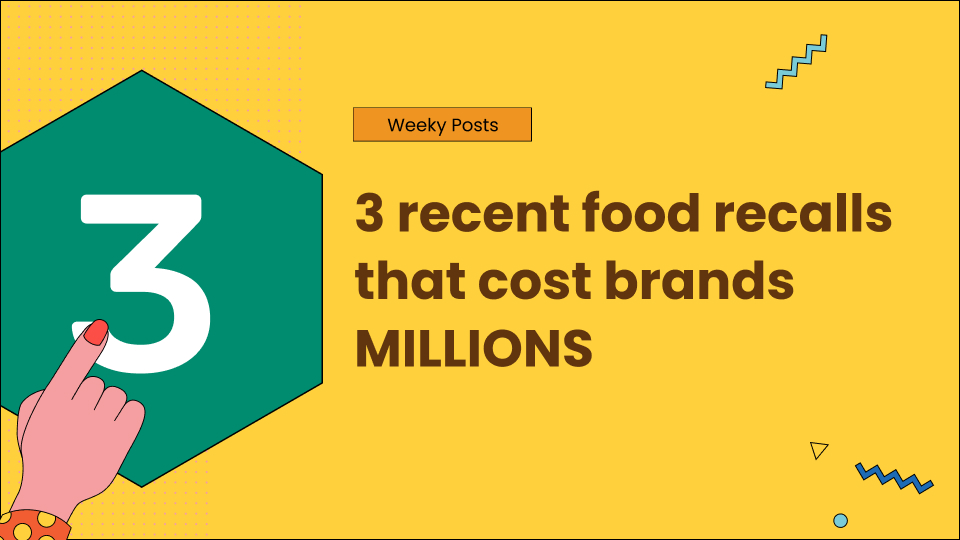Product recalls are the worst nightmare of any brand, and yet the number of recalls reaches a new high every year.
During our research, we found that in 2023, US product recalls reached a seven-year high, leading to 3,301 recall events in total.
In our research, we found the major causes of food recalls as
- Presence of undeclared allergen
- Incorrect labelings of ingredients/allergens
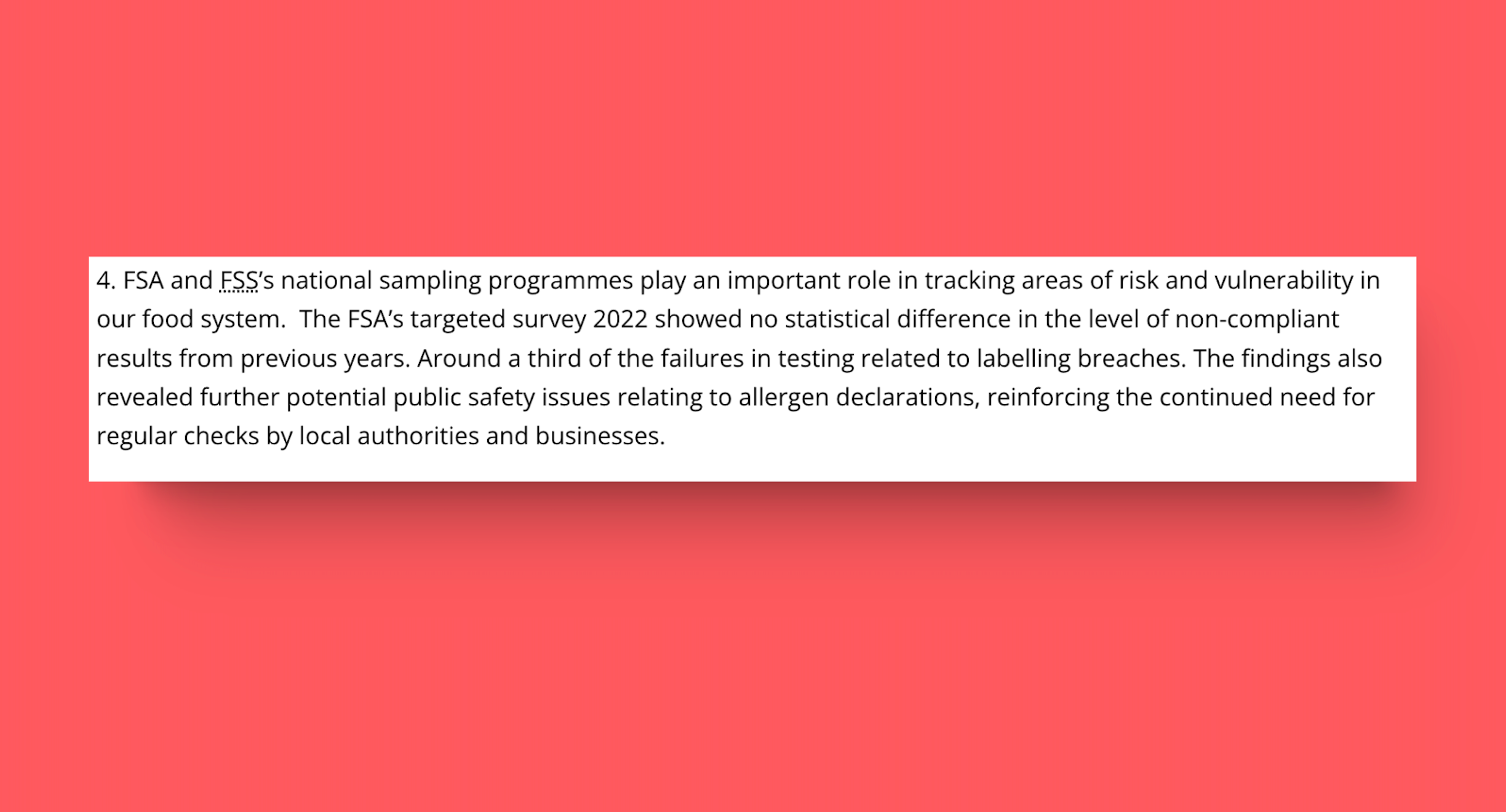
- Bacterial and viral contaminations
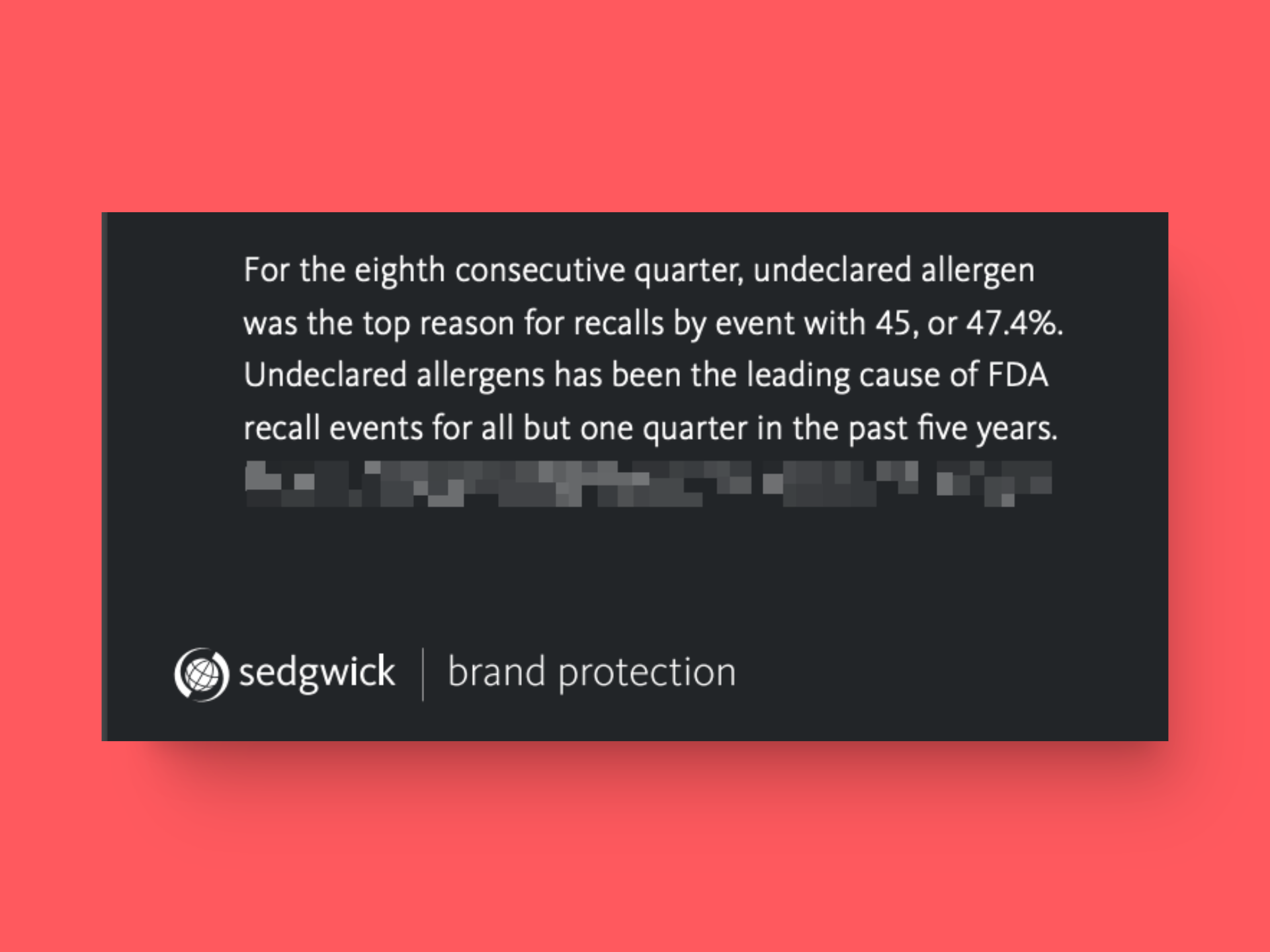
Food recalls can lead to faulty products and consumer rights violations, at least. However, at worst, they can cause deaths and severe illnesses in consumers, bankruptcies, and endless lawsuits for companies.
This blog will discuss the top 5 food recalls in the history of the food and beverage industry, along with other important details like
- Key trends
- Industry impacts
- Actionable tips to reduce the risk of recalls
Table of Contents
Understanding the Food Industry: Facts, Figures, and Fallout.
In the food industry, even one misstep can spell disaster. You will learn about it in this section, where we will discuss the harsh reality of product recalls: their frequency, causes, and devastating impacts.
This section is backed by the latest data and reliable industry reports like Sedgwick, Food Marketing Institute, etc. So, let’s dissect recent data to reveal why seemingly minor errors lead to major recalls and how these events ripple through the entire industry. For food manufacturers and distributors, this isn’t just information—it’s a wake-up call.
Alarming trend: Why food recalls are hitting record highs year after year?
Food recalls in the US have been on an upward trend, highlighting critical challenges in the industry:
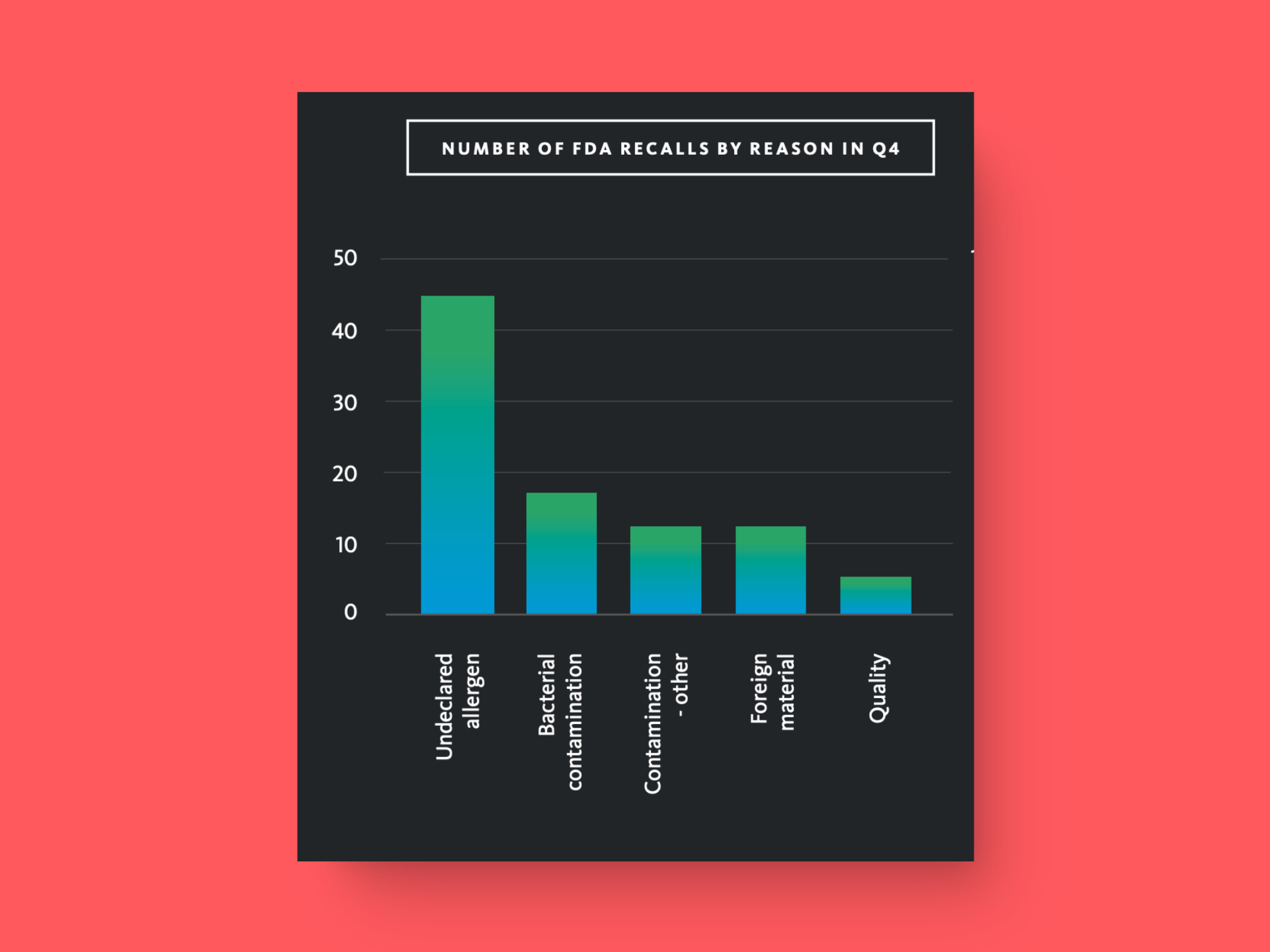
- FDA food recalls increased by 2.2% from 414 in 2021 to 423 in 2022. While the number of recall events remained relatively stable, the impact was far-reaching.
- The alarming surge in defective units: 700.6% increase from 52.1M to 416.9M units. This drastic rise indicates that when recalls occur, they affect much larger quantities of products.
- Undeclared allergens were the leading cause of recalls in 2022, accounting for 43.5% of cases. Nuts and milk were the most common undeclared allergens, posing serious risks to consumers with allergies.
The government has responded with new regulations and initiatives:
The Food Traceability Final Rule: Requires more detailed record-keeping for certain foods to quickly identify and remove contaminated products from the market.
The FASTER Act: Designed to allow potentially contaminated food to be identified and removed from the market more quickly.
FDA’s Human Foods Program evaluation: Recommended more frequent use of mandatory recall authority to enhance food safety.
These changes have significant implications for the food industry:
- Manufacturers and distributors face increased compliance costs.
- The laws regarding accurate labeling and allergen management are stringent.
- Companies need to improve their traceability systems throughout the supply chain.
The $10 million mistake: How a single mislabeled ingredient can bankrupt your food business?
Food recalls are not just a public health concern; they represent a significant economic threat that can potentially bankrupt companies, especially smaller ones. The financial impact of a recall extends far beyond the immediate costs of product retrieval and destruction.
Direct costs of a recall hit a company’s bottom line immediately. These include expenses for notifying regulatory bodies, supply chain partners, and consumers, as well as the logistics of retrieving and destroying the affected products. However, the true financial impact often goes much deeper.
According to a joint industry study by the Food Marketing Institute and the Grocery Manufacturers Association:
- The average direct cost of a recall is $10 million. For larger brands, costs can escalate significantly higher.
- Direct costs typically include:
- Notification to regulatory bodies, supply chain, and consumers
- Product retrieval (reverse logistics)
- Storage and destruction of recalled products
- Labor costs for recall activities and root cause investigation
However, the hidden costs can be even more substantial:
- Litigation expenses
- Costs from post-incident governmental oversight
- Lost sales
- Brand reputation damage
Over the last five years, recalls have nearly quadrupled in the food industry, leading to
- Increasingly global and complex food supply chains
- High-profile, large-scale recalls drawing more attention
- Heightened regulatory oversight
- Increased media coverage of food safety issues
Given these potentially crippling costs, investing in robust food safety measures and traceability systems isn’t just about regulatory compliance—it’s a crucial strategy for long-term business survival in the food industry. Companies must weigh the costs of prevention against the potentially catastrophic impact of a major recall.
Statistically speaking: Key insights into the impact of recalls on consumer trust!
Food recalls don’t just hit a company’s bottom line through direct costs; they can also lead to a significant and long-lasting loss of consumer trust and loyalty. This erosion of the consumer base can have devastating effects on a company’s long-term profitability and market position.
In Food Safety Magazine, we found out that consumer reaction to food recalls is swift and severe:
- 55% of consumers would switch brands temporarily following a recall
- 15% would never purchase the recalled product again
- 21% would avoid any brand made by the manufacturer of the recalled product
For food industry companies, maintaining consumer trust isn’t just about sales—it’s about long-term survival in a competitive market where alternatives are readily available to wary consumers.
What went wrong here?: In-depth analysis of top 3 food recalls due to labeling errors
Let’s analyze the top 5 brands that had to recall their brands, mostly due to non-compliance.
1. Pret A Manager’s sandwich leads to the death of a 15-year-old
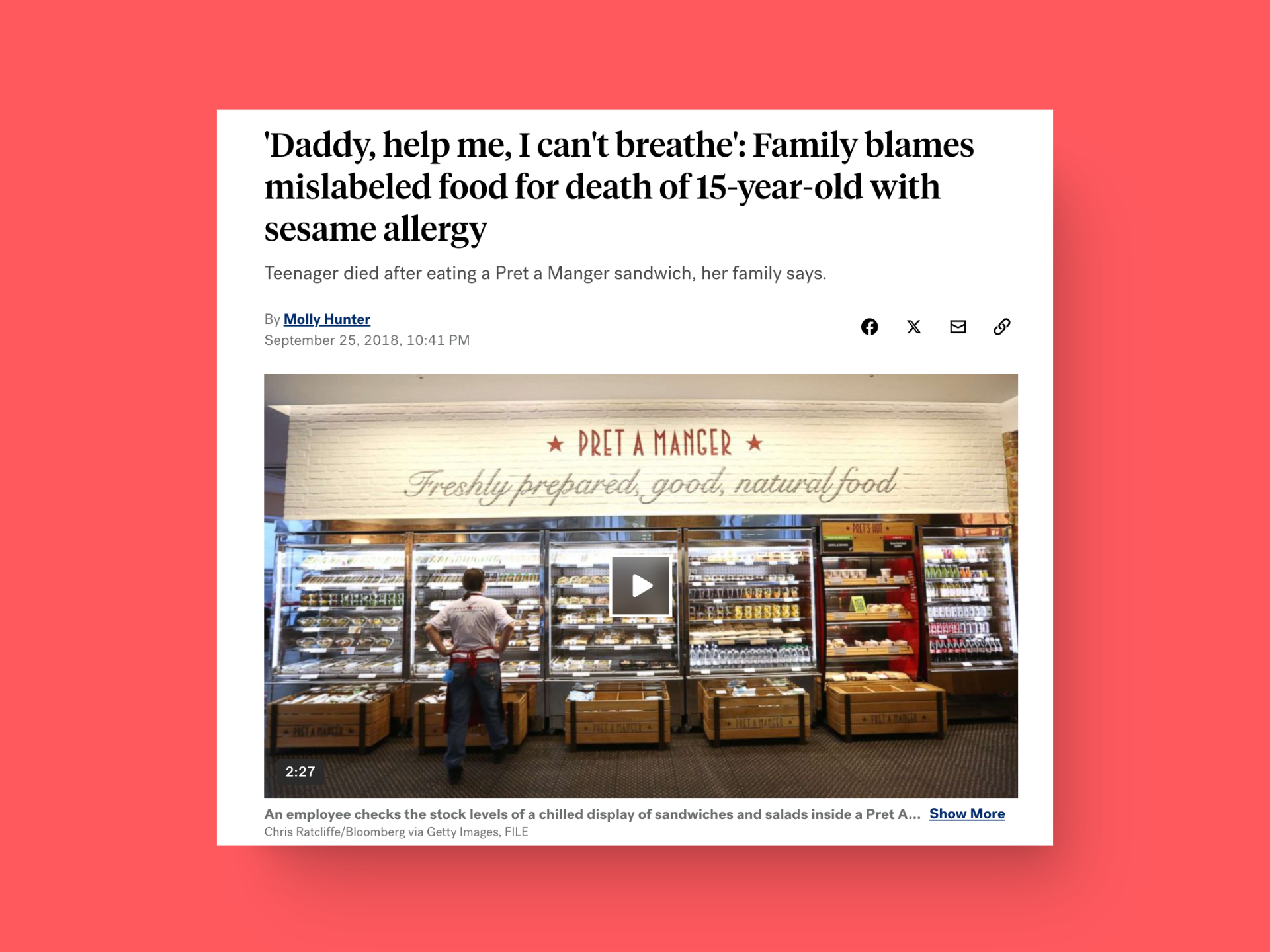
Company name: Pret A Manager
Year of recall: 2016 (first incident), 2017 (second incident), 2018 (public disclosure and policy changes)
In 2016, 15-year-old Natasha Ednan-Laperouse suffered a fatal allergic reaction after eating Pret A Manager’s sandwich. 20 minutes after eating the sandwich, she broke out in hives “like a jellyfish sting.”
According to her family, Natasha was allergic to sesame, and that ingredient wasn’t mentioned on the label. That said, EU regulations also consider sesame as one of the 14 allergens that need to be listed on pre-packaged products.
A year later, another customer died after eating Pret’s “super-veg-rainbow flatbread,” which was supposed to be dairy-free. Pret stated that the second customer’s death was caused by dairy protein found in a non-dairy yogurt supplied by CoYo, a British vegan product maker. Pret also declared the termination of its business relationship with CoYo U.K. immediately.
The incident prompted the UK Government to introduce stricter allergen labeling laws in October 2021, known as Natasha’s Law.
Regardless of who was at fault, both deaths had one thing in common—mislabeling. Incorrect labels cost two people their lives.
Specific issues that caused label recall:
- Inadequate allergen labeling on packaging
- Undeclared sesame in a sandwich product
- The presence of dairy protein in a product labeled as vegan
- Lack of full ingredient lists on freshly made products
Consequences of the recall:
- Negative Media Attention: The incidents received extensive media coverage, which not only highlighted the failures in Pret’s labeling practices but also resulted in widespread public criticism and negative publicity for the brand.
- Operational Changes and Challenges: Following the incidents, Pret A Manger had to reassess and improve its food safety protocols and labeling processes, which can be resource-intensive and may disrupt normal operations while changes are implemented.
- Loss of Consumer Trust: The tragic deaths linked to mislabeling led to a significant erosion of trust in Pret A Manger, as consumers became wary of the safety of their food products.
2. A 25-year-old dies after eating mislabelled Stew Leonard’s cookie

Most of us are already aware of the infamous Orla Baxendale’s death case after eating a mislabelled cookie. But for those who don’t know, here’s a brief summary.
Orla Baxendale, a 25-year-old dancer, died after eating Stew Leonard’s cookie that did not mention peanuts as an ingredient. The company faced a lot of criticism and hatred from people on social media—especially on Reddit.
The loss of human life is the worst possible outcome for any brand, resulting in a tragedy for consumers and lasting reputational damage. As highlighted in the attached Reddit discussion, people are outraged by the brand’s negligence. With nearly 220 million people globally affected by peanut allergies, Orla’s death feels personal to many.
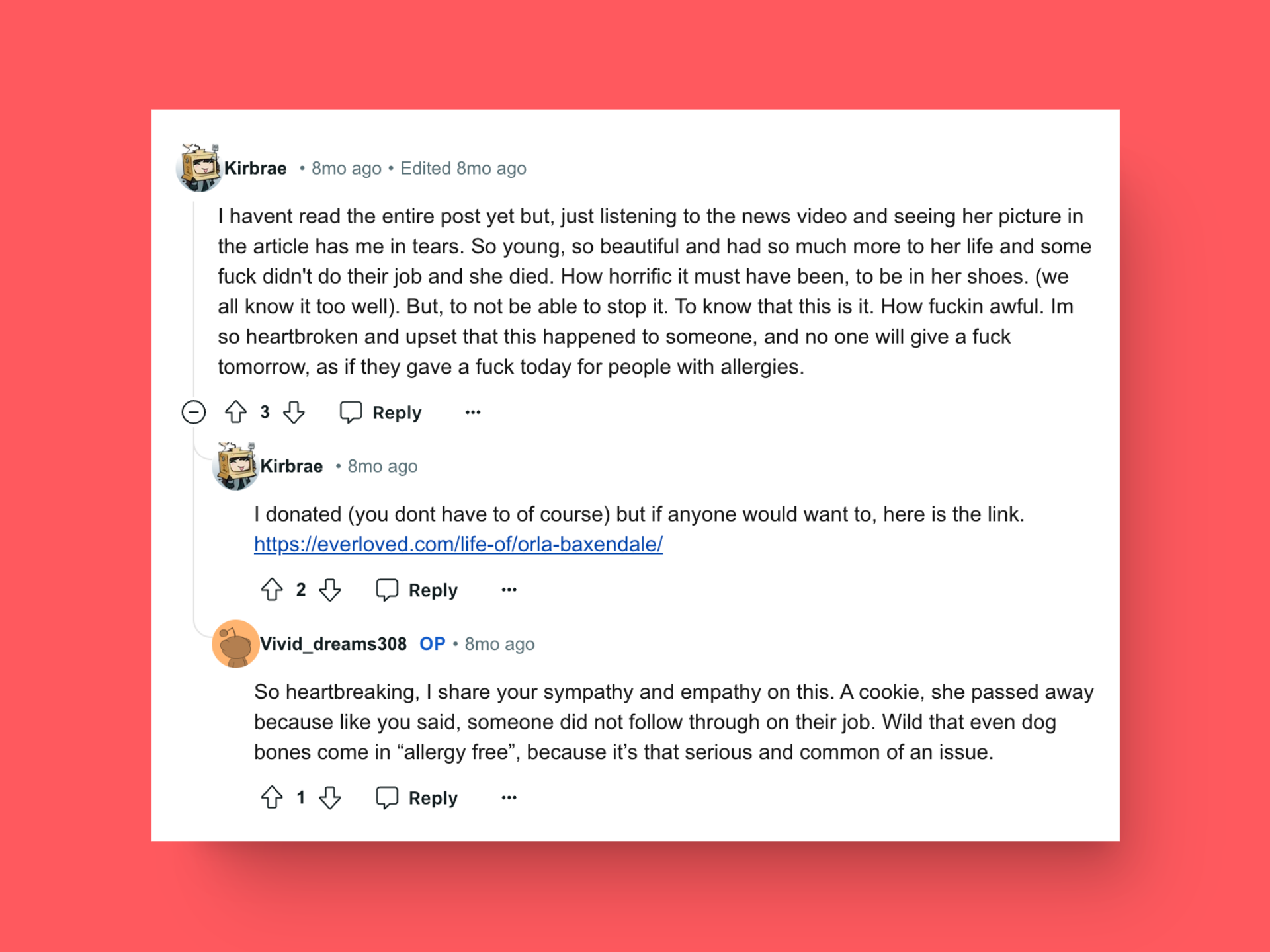
Company name: Stew Leonard
Year of recall: 2024
Specific issues that caused label recall:
- Peanuts were not listed as an ingredient on the packaging of Stew Leonard’s Florentine Cookies.
- The product label failed to declare peanuts and eggs, both of which are significant allergens.
- There was a lack of effective communication between Stew Leonard’s and their supplier, Cookies United, regarding changes in the cookie recipe.
- The incident highlighted insufficient quality control practices in Stew Leonard’s manufacturing process. This was confirmed after the company recalled many chicken products due to undeclared milk usage on product labels.
Consequences of the recall:
Loss of life: The most tragic consequence was the death of Órla Baxendale due to a fatal allergic reaction.
Public outrage and criticism: There was significant backlash against Stew Leonard’s on social media platforms like Reddit, where consumers expressed anger over the brand’s negligence regarding food safety and labeling practices.
Legal action: Following the incident, a wrongful death lawsuit was filed against Stew Leonard by Baxendale’s estate.
Regulatory scrutiny & recall notice: The Connecticut Department of Consumer Protection and other health officials also saw this tragedy. Following the investigation, they also sent a product recall notice to Stew Leonard.

Reputational damage: The incident has caused lasting reputational harm to Stew Leonard’s, as trust in their products has been severely compromised among consumers, particularly those with food allergies.
3. Van’s gluten-free waffles Recall due to undeclared wheat

Company name: Van’s International Foods
Year of recall: 2023
On July 3, 2023, Van’s International Foods announced a voluntary recall of certain packages of Van’s Gluten Free Original Waffles due to the potential presence of undeclared wheat.
This recall was initiated as a precautionary measure, as individuals with wheat allergies or severe sensitivities could face serious or life-threatening allergic reactions upon consuming the affected products. Even though the recall did not cause reputational damage for the company, it did cost them financially.
Specific issues that caused label recall:
- Undeclared Wheat: The waffles were labeled as gluten-free but contained wheat, which was not declared on the packaging.
- Cross-Contamination: The issue arose when a limited number of cartons of gluten-free waffles were inadvertently mixed with a pallet intended for wheat-containing products during production.
Consequences of the recall:
Product recall & finance imbalance: Affected products were recalled from distribution centers and retail stores in states including Arizona, California, Florida, Georgia, Illinois, North Carolina, and Washington. This recall affected the company’s finances and the expected profits from the product, causing a financial imbalance.
Potential loss of consumer trust: Even though the recall was voluntary and handled proactively, there is always a risk that consumers may lose trust in the brand. Trust can take a long time to rebuild after a product safety incident, affecting future sales and brand loyalty.
Damage to brand reputation: Even if the recall was voluntary and handled proactively, it still damaged the brand’s reputation to some extent. Consumers perceived the company as negligent and questioned the quality and safety of its products, leading to a loss of trust.
Impact on stock valuation: According to Scielo’s findings, voluntary recalls often result in significant stock declines for companies. The market tends to react negatively to recall news, causing a drop in stock prices for publicly traded firms. This can impact investor confidence and harm long-term financial stability.
Case study: Preventing the Pret A Manger tragedy if Pret A Manger had utilized a system like Govisually AI.
As the food service industry moves fast and convenience often takes precedence, the tragic events surrounding Pret A Manger serve as a stark reminder of the importance of accurate food labeling. Through this hypothetical case study we will explore how the implementation of advanced AI technology, like GoVisually’s Compliance AI, could have potentially averted these heartbreaking incidents and revolutionized Pret’s approach to food safety and labeling.
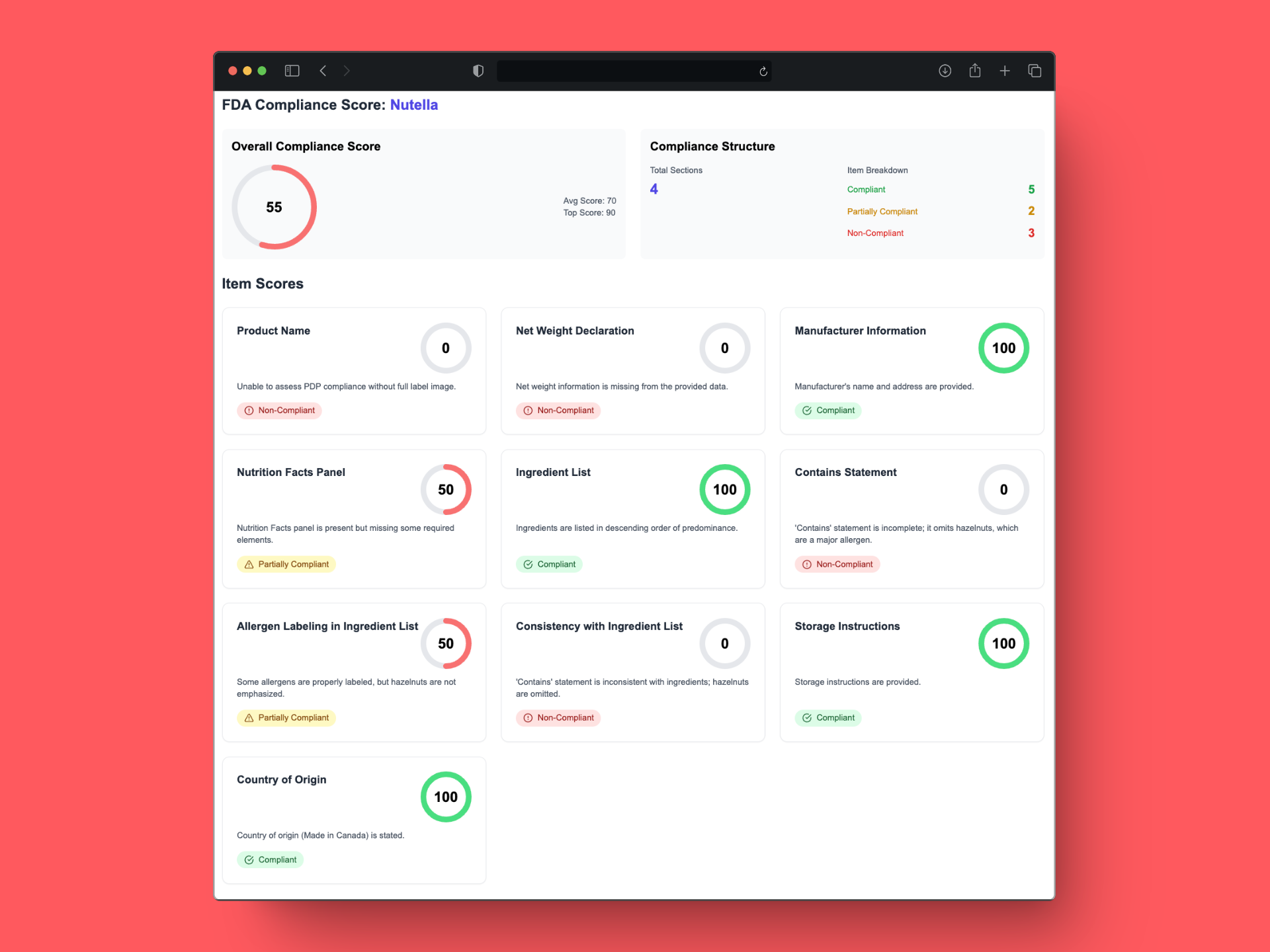 1. Lightning-fast, accurate allergen Detection
1. Lightning-fast, accurate allergen Detection
Traditional method: Manual checking of ingredients, prone to human error.
With GoVisually AI:
- One-click analysis scans labels in seconds
- 99.99% accuracy in allergen detection
- Reduction in review time from weeks to minutes
Potential impact: The AI would have instantly flagged the presence of sesame in the sandwich and dairy in the “dairy-free” product, preventing both incidents.
2. Comprehensive regulatory compliance checks
Traditional method: Time-consuming manual cross-referencing with regulatory databases.
With GoVisually AI:
- Instant checks against extensive regulatory databases
- Coverage of multiple jurisdictions (FDA, FSA, CFIA)
- Real-time updates to regulatory requirements
Potential impact: Ensures compliance with the latest EU regulations on allergen labeling, which considers sesame as one of the 14 allergens that must be listed on pre-packaged products.
3. Advanced keyword and claim verification
Traditional method: Manual verification of product claims and ingredients.
With GoVisually AI:
- Automatic verification of keywords and claims with 99.9% accuracy
- Detection of restricted and required keywords
- Validation of allergen-related claims
Potential impact: Would have caught the discrepancy between the “dairy-free” claim and the presence of dairy protein in the product.
4. Proactive issue flagging and resolution
Traditional method: Reactive approach to labeling issues, often discovered too late.
With GoVisually AI:
- Proactive flagging of potential compliance problems
- Suggestions for corrections and improvements
- Continuous learning and improvement of the system
Potential impact: Could have alerted Pret to the need for clearer allergen labeling on freshly made products, potentially prompting policy changes before the incidents occurred.
5. Robust version control and collaboration
Traditional method: Fragmented communication between departments, potential for outdated information.
With GoVisually AI:
- Centralized platform for real-time collaboration
- Meticulous version control ensuring review of current artwork
- Reduction in communication-related delays by up to 70%
Potential impact: Facilitates better coordination between Pret’s product development, marketing, and food safety teams, ensuring consistent and accurate labeling across all products.
By implementing GoVisually’s Compliance AI, Pret A Manger could have:
- Reduced compliance issues by 20-25%
- Minimized compliance risks through automated checks
- Increased efficiency by up to 90% compared to manual processes
- Achieved substantial cost reductions in monthly review expenses
Most importantly, it could have prevented the loss of life and the subsequent damage to consumer trust and brand reputation.
Want 99.99% error-free labels? Here’s your step-by-step guide.
By now, you’re well aware of the importance of a fully compliant, error-free label. So, the question arises: how do you create one? Well the answer is simple, by building an efficient label review system.

Here’s how you can build a recall-proof label review system;
1. Implement a rigorous ingredient tracking system.
Industry leaders like General Mills rely on advanced software solutions such as SAP’s Track and Trace or Trustwell’s FoodLogiQ to monitor their complex supply chains. These systems offer real-time tracking of ingredients, their sources, and any compositional changes, ensuring you’re always on top of what goes into your products.
2. Establish a multi-step verification process.
A multi-step verification process involves sequential checks by different departments to ensure label accuracy. This approach significantly reduces the risk of errors by combining diverse expertise. For example, Nestlé uses a three-stage process: initial creation, legal review, and quality assurance check. Software like Esko’s WebCenter software can streamline this process, facilitating collaboration and maintaining a clear audit trail.
3. Track ingredients with precision
Ingredient tracking systems monitor every component from source to product. This ensures accurate labeling and swift identification of issues. This step will ensure real-time tracking and alerts for ingredient changes, which is crucial for maintaining label accuracy. Aptean Food & Beverage ERP software is an award-winning software that helps you improve food safety and traceability, enhance efficiency, and increase profitability.
4. Leverage automated label verification technology like compliance AI.
Automated verification uses advanced technology to catch labeling errors. This includes
- Optical character recognition (OCR) for text checks
- Barcode scanning for product verification
- Restricted and required keyword scanning
- Spell and sentence checks
- Allergen declaration
- Regulatory compliance checks for different regulatory bodies like FDA (food, cosmetics, supplements), UK (food), and CA CFIA (food)
GoVisually’s compliance AI is an industry leader for automating label verifications. It can make your label process go from weeks to minutes in just a single click. Want to learn how? Read here!
Note: While our AI compliance checker is highly accurate, it should be used as a tool to aid human expertise, not replace it. Always consult with qualified professionals for final compliance verification.
5. Prioritize ongoing staff training
Regular training keeps staff updated on labeling regulations and best practices. This proactive approach minimizes errors due to knowledge gaps. AIB International and FDA’s FSMA training are industry standards. E-learning platforms like Alchemy Systems offer specialized food industry training modules, including labeling and allergen awareness, ensuring your team stays current.
6. Stay informed on regulatory changes
Staying up-to-date with labeling regulations is crucial for compliance. For that, you can subscribe to the official pages of relevant regulatory bodies like the FDA for the US, FSA for the UK, and more. You can also subscribe to research sites like ESHA Research’s Food Labeling News.
Additionally, you can also attend key events like the Food Label Conference. This approach helps you anticipate and prepare for regulatory changes, reducing the risk of non-compliance.
7. Enhance supplier communication
Effective supplier communication ensures you’re immediately informed of ingredient changes. You can implement this by deploying an efficient supplier management software like TraceGains. This software facilitates clear communication and documentation, which is crucial for maintaining accurate ingredient information on labels.
8. Implement blockchain for traceability
Blockchain technology is like a digital ledger that records every step of a product’s journey from source to shelf. It’s crucial for creating error-free labels because it provides a complete, tamper-proof history of your product’s ingredients and processing.
By implementing blockchain, you can:
- Verify ingredient sources and claims (like “organic“ or “non-GMO”)
- Quickly trace and isolate problematic ingredients in case of a recall
- Ensure that your labels accurately reflect the product’s true history
You can consider platforms like TE-FOOD or ripe.io to provide food-specific blockchain solutions.
9. Conduct third party regulatory audits
Independent audits provide an objective assessment of your labeling processes. Whole Foods requires third-party audits for all suppliers. Engage with certification bodies like SGS or Bureau Veritas for comprehensive evaluations. These audits help identify blind spots and ensure your labeling practices meet the highest industry standards.
10. Utilize robust document control systems
Document control systems manage label versions and approval workflows. Kraft Heinz uses a centralized system for consistency across its product range. You can deploy GoVisually as your artwork management software. It offers version control and collaborative tools like markup tools, automated review cycles, direct annotations in the design asset, etc. Using artwork management software, you can reduce the risk of outdated or incorrect label information reaching the market.
